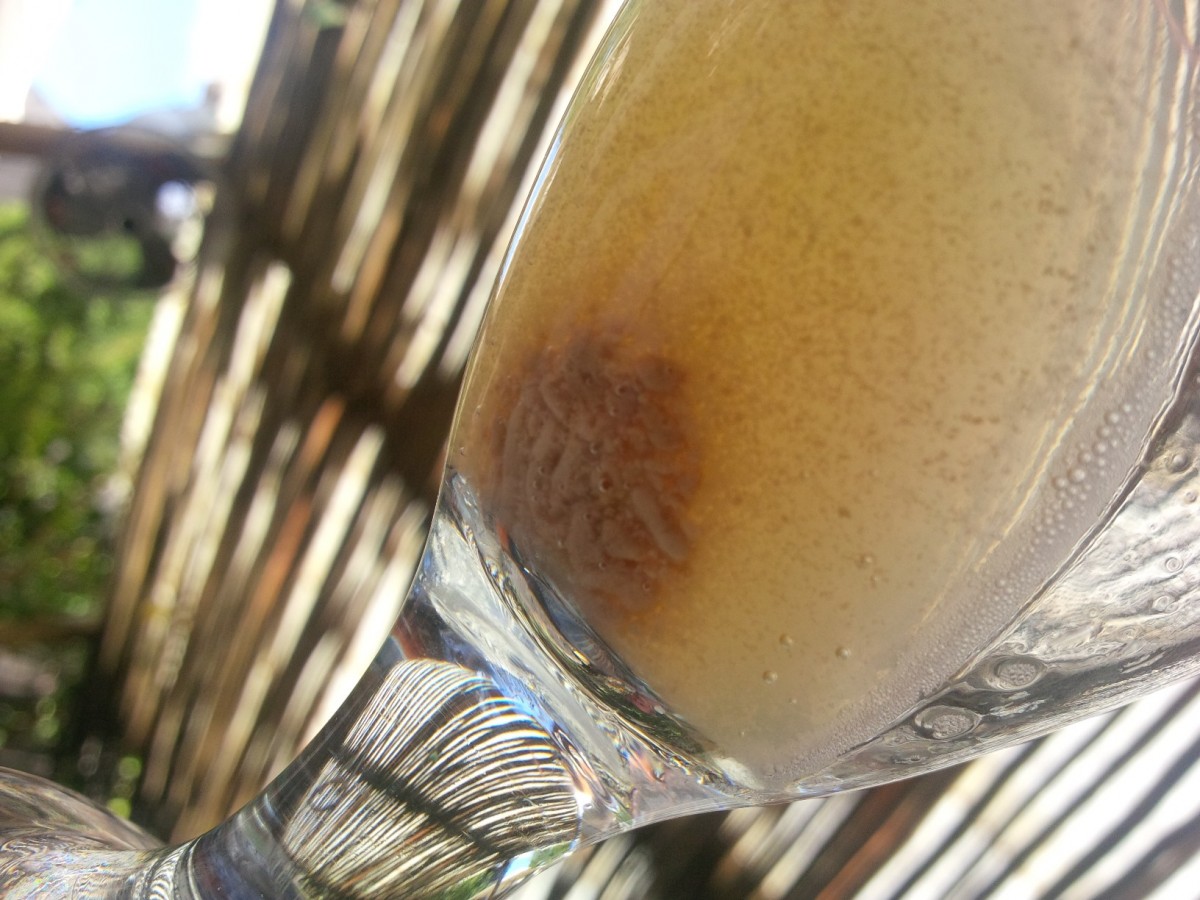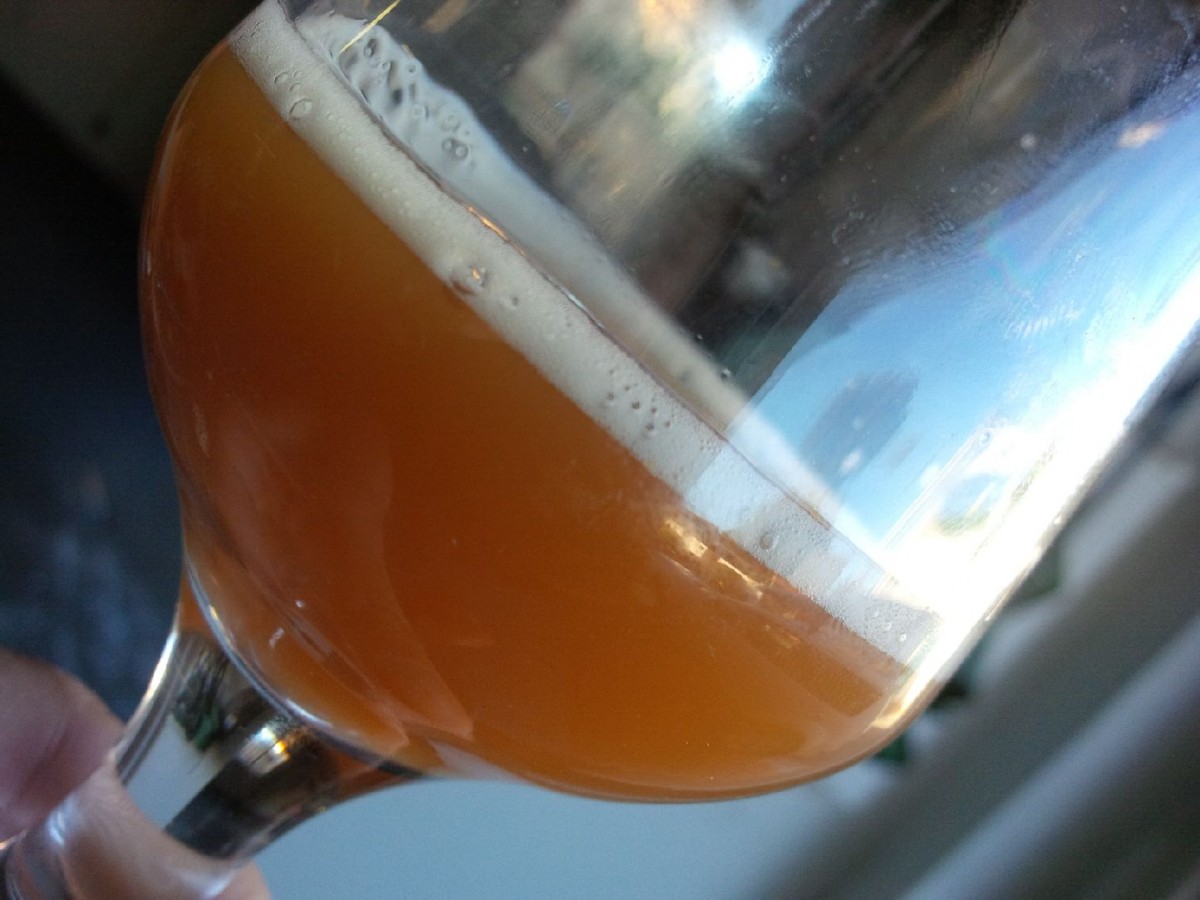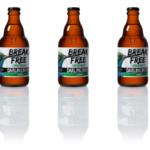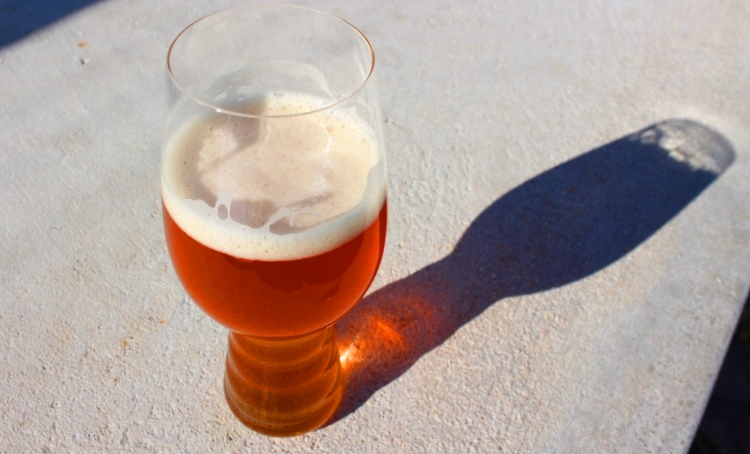I’ve been meaning to get around to writing this post for weeks. Probably even months. There’s so much to be said, it’s tough to know where to start, so I’m just going to ramble on and ask you to join in. Grab yourself a cold one, for you could be here for a while. Here’s the basic problem – there are a lot of bad bottles of beer in South Africa. This is not to say that they’re bad beers before they get into the bottle – though some undoubtedly are. It just seems that there is a huge bottling issue in the country’s craft beer scene and if brewers don’t address it, it could be the undoing of the industry. When I go to Roeland Liquors, it’s no coincidence that I tend to leave with more imported beers than local brews. I would love to buy all South African beer. I love supporting the local guy, but do you know what I don’t love? Spending 20, 25 or 30 bucks on a bottle of beer that turns out to be undrinkable. On tap I’m willing to risk it, largely because if there’s something wrong, I can easily send it back. But schlepping back to the bottle store with a bottle of beer that’s been open and in the fridge for three days while I was trying to find time to return it is kind of awkward.
The issue
So just what is the problem with bottled beers in SA? It just seems so hit and miss. Often, the beer is just fine. Sometimes it’s OK, but doesn’t taste like it does on tap. And sometimes it’s plain undrinkable. Sure you get the occasional flat beer where capping has gone awry, or one or two infected bottles that perhaps didn’t get cleaned quite right (I’ve heard about brewers who assume their bottles arrive ready sanitised, though wisdom suggests all new bottles need a good clean before they’re filled). But undoubtedly the biggest problem when it comes to bottling is this insistence on bottle conditioning.
What is bottle conditioning?
Before we get too deeply into this, let’s quickly define what bottle conditioned beer is. You could think of it as the champagne of beer. Rather than CO2 being pumped into the beer to carbonate is artificially, a bottle-conditioned (BC) beer undergoes a secondary fermentation in the bottle. Sugar and yeast are added to the bottled beer and since the beer is capped, the CO2 cannot escape as it would during ‘normal’ fermentation. Instead it stays in the bottle, creating a “natural bubble”.
What’s good about it?
There’s a lot to be said for bottle conditioning – it’s basically as “real” as a beer can be – unfiltered (usually), unpasteurised and full of flavour. Start-up brewery Gallows Hill currently bottle condition all of their beers and brewer Schalk Marais explains the pros: “Bottle conditioning, when done properly, can result in beer with a finer and silky carbonation, much better head retention, more complex flavours, longer shelf life, and better aging ability than force-carbonated beers.” Granted, bottle-conditioning, when done right, can give character, flavour and refinement to a brew. We’re talking the champagne of beers here. But it has to be done right. “Is Duvel bottle-conditioned?” a beer geek friend asked, wide-eyed and incredulous while we were chatting about the topic recently. He was probably picturing the fluffy head, the fine bubbles and the brilliant, gold appearance with just a hint of haze. He was probably comparing this to some of the bottle-conditioned beers he’s more familiar with – cloudy brews with chunks of yeast and a veritable Russian Roulette of off flavours. But Duvel, or frankly most beers that originate in Belgium, is the pinnacle of bottle-conditioning. These beers demonstrate exactly what is good about secondary fermentation in the bottle.
So what’s the problem?
On the flip side, a badly-done BC beer can be truly hideous. At best, it’ll be tasty but flat. At worst it will contain a yeast cake in its base and a range of off flavours from the yeast that range from sour to phenolic. It really all comes down to the yeast and as any homebrewer will know, yeast is the one ingredient in beer where you don’t want to mess around.
And what’s specifically going wrong in the SA scene?
Well, it is all about the yeast and I suspect that many brewers just aren’t following the correct yeast management procedures when it comes to bottle conditioning. Yeast are tricky little buggers and much like the glasses you pour your beer into, they need a good clean before they’re re-used. I know of brewers who re-pitch their yeast dozens of times without correctly cleaning it and if this yeast is used to bottle condition, as apparently it often is, then it’s a nasty beer waiting to happen. Many of the bigger brewers use a completely different yeast for bottle-conditioning, which eliminates much of the risk.
And the brewer’s responsibility doesn’t end with using the correct yeast. In a country with a long history of lager-drinking, the idea of a ‘live beer’ is a new one and consumers need a bit of info if they’re going to enjoy the beer as it was meant to be enjoyed. Do they swirl and add the yeast? Do they pour gently and leave the last half-centimetre in the bottle? And while we’re at it, should it be kept upright or will the bottle be OK on its side? Speaking of storage, I’ve heard everything from “bottle conditioned beers last longer, you can store them on a shelf for months” to “they need to be treated like a carton of fresh milk” and I can’t find a definitive answer when it comes to how BC beer should be stored. I’ve also heard the “it wasn’t treated correctly in transit/it didn’t travel well” excuse, which I find to be a huge cop out.
I recently enjoyed a Sierra Nevada Pale Ale on the beach in Mauritius. No, I’m not just bragging about my holiday – I do have a point here. This beer was shipped from the West Coast of the States to the UK and then from the UK to Mauritius. We found it at Lambic, an awesome little bar I’ll be blogging about soon. It was sitting on a shelf – not in a fridge, on a shelf – and when we opened it, it was as wonderful as every other Sierra Nevada Pale Ale I’ve ever enjoyed, which is to say it was pretty damn wonderful. Oh, and it’s bottle conditioned, by the way. Kind of blows the ‘it wasn’t treated correctly in transit’ excuse out of the water, but if you’re going to insist that transportation or incorrect temperatures will damage your beer, then you need to tell consumers this on the label.
And if ‘user error’ is eliminated but the beer is still bad? Well, perhaps it was bad when it was bottled. And when I say bad I mean infected, somehow. A bottle conditioned beer is a live beer. It will change and mature in the bottle. It also contains the one thing that causes most off flavours in a beer, and just how the carbonation increases in the bottle, so too can a hint of infection. Leave that slightly infected bottle on a shelf, or even in a fridge for a while and when you open it you’re in for an intro class on beer nasties.
And why are people insisting on bottle conditioning their beers?
“It can’t be called a craft beer if it’s not bottle conditioned”, a Twitter follower remarked when I brought this subject up a few months back. When I asked brewers their opinion on this statement, answers tended to involve the word “crap”, with adverbs including “utter”, “absolute” and “total”. I agree. If you can’t call it craft unless it’s bottle conditioned, then most of DogFish Head’s brews aren’t craft beer. Pliny the Elder isn’t a craft beer. BrewDog isn’t a craft brewery or closer to home, neither is Devil’s Peak, CBC or Lakeside, to name but a few. But of course, they are, so like the brewers I asked, I have to say that the ‘craft beer must be bottle-conditioned’ theory is indeed, complete crap.
Some brewers I’m sure keep doing it because, like my Twitter pal, they think it’s the right thing to do, that it’s a hands-on procedure ans therefore the only way to bottle a craft beer that fits with the whole artisanal ethos. Some do it because it seems like the easy option – though if bottle conditioning is being done right, it should be a far more difficult process than simply force carbonating. As JC Steyn from Devil’s Peak says: “It’s not an easy science by any means”. Some probably do it because they haven’t encountered an alternative – most home brewers bottle-condition their beers and as they graduate to become commercial microbrewers, they carry on the practice. And undoubtedly, some do it because it’s cheap. It means not having to invest in a bottle filler, though in the long run, when consumers get savvy and either return or refuse to buy untrustworthy beers as I am prone to do, it won’t be a cheap option. In fact, it could well end in the downfall of a brewery or two.
So is it always wrong?
Hell no! A bottle conditioned beer, when done properly, is wonderful. It certainly suits some styles better than others – a wit or a weiss should always be bottle conditioned; most Belgian ales also. Lagers, due to their delicate flavours, tend not to be and it takes true talent to get that particular style right. It’s a fine procedure to practice in your brewery, but only if you’re going to spend some time reading up on how it’s done, some time working out your brewery’s quality control practices and invest more time and a little money in proper yeast-treatment practices (and that’s a whole different blog post).
Right, we get it – where do we go from here?
Well, I’ve said my bit. Basically, if you can’t guarantee that your bottle conditioned beer will be a fine tasting brew that I don’t have to sieve through my teeth, I’d infinitely prefer that you force carbonate. I’m sick of hearing the sound of off beer glugging down my sink.
What do you think?
Is craft only craft if it’s bottle-conditioned? Are you in love with the natural bubble? Are you fed up of flat or sour beers? Or am I alone in finding that many South African bottled beers are disappointing at best and undrinkable at worst? Let’s get a conversation going in the comments section below:
Please also see a brief follow-on from this extremely long post here.













I used to head speedily to Roeland Liquors when a new locally brewed beer that sounded great was announced to be in stock. I proceeded to empty my wallet and bought as many bottles as I could. One for myself and a separate bottle to taste with each of my friends at different times. Probably a couple more for myself as well.
Needless to say I now purchase 1 bottle to taste and will rather make a second trip to buy more if it is great.
I too cannot afford to spend money on making the grass in my garden greener by watering it with bad beer.
The biggest problem here in my opinion is that someone will order a craft beer. Taste it in the company of friends – if it is bad, they will not say so as they don’t know any better, they will act like they are enjoying it but in fact will never buy a craft beer again – which means that the whole industry is at risk. It is up to every single brewer to make sure that their brews are better than up to scratch. The beer itself should make people go WOW! This way craft beer as an industry wins and the people get to vote with their wallets for their best tastes. Putting out bad beer is a dis-service to the public and to the breweries brand.
Here’s hoping my next purchase is fantastic
I couldn’t agree with you more Brad, especially about the potential of sloppy brewing damaging the industry. May your next beer be the best one you’ve ever had!!
Bottle conditioning shouldn’t be to difficult, what I have found is the biggest issue is infection. Sometime ago Camelthorn brewery had to throw several batches away do to not washing the bottle’s.
I have had one case where the bottle foamed due to the addition of chillis. Live and learn I guess.
I think it’s a bit unfair landing this all on bottle conditioning. Here in Durban there are entire ranges of filtered beers that I just won’t buy because they are almost always infected; and yet if I get them in Cape Town or Joburg where they are produced, and they are brilliant. Meanwhile I’ve had bottle conditioned beers that sat at the back of my cupboard for over a year, and they were great.
Producing beer that doesn’t go off requires attention to detail, and whether a brewery chooses filtering or bottle conditioning, without that they will produce bad beer. There are a lot of breweries in this country that filter their beer, and if they want to have a good reputation outside of the city they brew in, they need to clean up or start pasteurising.
Thanks Dion – great to get an insight from another part of the country. So what’s the problem, do you think – bottles not being washed properly? Beer infected to begin with?
I think there are problems all the way through the system with some breweries. You correctly pointed out the mishandling of yeast, so even if the beer is mostly ok on bottling day, the bottle conditioning will be compromised right from the start. There is good reason that many Belgian breweries lager the beer before bottling with fresh yeast.
Lapses in sanitation throughout the bottling process is probably the number one cause, especially with breweries using much more complex filtration systems (so many more places for bacteria to hide, so sanitation becomes even more important).
I do also wonder how many filtration systems in this country are not capable of filtering out bacteria sufficiently?
Some good info on this topic here: http://www.brewersassociation.org/attachments/0001/3980/EDP_Quality.pdf
Fo’sho there is something up here! The first thought when you try a new beer should never be “I hope this one ain’t sour…” which is something that is happening quite a bit of late. A craft beer is a contract, a promise that exists between the brewer and the consumer that goes something like… “I promise that you won’t be gutted when you hand over top dollar for my tasty beverage that I have crafted with love. What it says on the label is exactly what you will taste… and you will come back for more ‘cos my beer kicks ass!” Anything short of that and sourness starts to creep in literally and figuratively.
Now to be clear, we have tried to brew beer and it was a crushing, humbling, pride-swallowing siege of sour apples, plastic and feet . We have massive respect for anyone undertaking this calling as a career… and the reason we keep coming back for more is that in amongst all the barley, hops and water, we manage to find a few very real gems… and that too is something that is happening more and more often of late. Hot fires and cold beers people… epic result! G
Thanks for joining the conversation Greg. So gutted I never got to try your sour plastic foot beer. Hooray for all the great beers/brewers out there! And boo, hiss and shame on anyone putting out sour muck.
All this beer talk made us thirsty, and so off we went, handed over the dosh… and am very sad to report my sink is not thirsty anymore (ggrrr). 3 different beers, same sour snout… Ended up going back down the road for a 6-pack of milk stout (which was delicious). Still, in the immortal words of Bon Jovi : “We gotta keep the faith!”
🙁
Would be interested to know what they were…tell me next time I see you!
Great article, thanks Lucy. This is an important topic that needs to be addressed over and over again, until it is drummed into our minds.
As Lucy and a number of others pointed out, it seems we are encountering bad beer that is both BC and filtered. From my personal experience of my own beers, as well as some of my brewing mates beers, bottle conditioned beers tend to taste great for much longer than filtered.Yes, they do change in character over time, of course it will, considering there is live yeast in the bottle (usually lowers in body, sweetness, and character). I dragged out a bottle of my english bitter that was 2 years old, it had sat in the corner of the laundry completely forgotten about. It tasted as great as it did the first month of its life (maybe slightly thinner considering the yeast had time to eat through some of the residual more complex sugars). I think this long life is purely due to pitching the right amount of yeast into the fermenter, pitching healthy happy yeast, and a completely anal cleaning regime. There are two MAIN rules (along with many others of course) to follow, to ensure “healthy” beer: making sure your yeast pitch, equipment, fermenters, bottles etc are properly sanitary, and your yeast pitch is high enough. Yeast is a strong organism, it can easily outcompete the low levels of bacterial/wild yeast numbers present (I don’t think any brewer can be 100% clean of other microbes on transfer into their fermenters- microbes are just EVERYWHERE), so pitching the proper amount of happy yeast will ensure any initial contam is dealt with by the brewing yeast present quickly. This goes for the bottles as well. Having the yeast present in the bottles also ensures that any microbes that shouldn’t be there, are dealt with by the brewing yeast (filtered beers don’t have this luxury, so if there is anything dodgy present, it will have a field day).
Of course, if your transfer pipes etc are coated in biofilms, you don’t stand a chance. The beer may taste nice a few days after bottling, but a couple of months down the line, the bacteria/wild yeast present will have increased in number, eaten all the complex sugars, and you land up with a thin, fizzy, phenolic, cloudy, sour beer :/
Of course, I am speaking as a homebrewer transitioning into commercial brewing. Things are a lot more difficult to clean due to the shear size of everything, but I don’t think this should be an excuse. I have seen too many breweries first hand, taking short cuts in cleaning and yeast pitching. I don’t know if they’re trying to save money? But this is ensuring their product is destined to fail. There just isn’t room for shortcuts in brewing.
I am also tired of throwing expensive beer away. So, now, I politely email the brewery responsible and explain the problem. I don’t think dissing a brewery publicly or even privately is right, it is their pride and joy. Each time I have pointed out their poor quality beer, they have immediately replied with apologies and have been very accepting that their beer is bad and promising to rectify it. I have had one brewery recall all their beers at a local restaurant and replace them with a fresh batch after I pointed the problem out. To me, that is good form, and shows the brewery is concerned about the quality of their beer, and I appreciate that. Of course, this doesn’t ensure that they are addressing the problem that is causing the bad beer (I really hope that they do take the complaint to the brewery though). But this brings up another point. I think that brewers are more likely to accept my complaint as being legit as I am a brewer and usually know bad beer from good. But for the average Joe to complain, they are often fraught with a level of arrogance from the brewer, kind of “I am the brewer, so I know beer better than you do”, and I have witnessed this first hand at festivals. I think brewers and consumers need to start being a little more vocal about the situation. I don’t mean dragging a brewer down, but just making them aware, and even offer solutions. Sometimes the off-flavour is very distinctive, and you can pinpoint exactly where they’ve gone wrong.
I get cross when craft beers are bad, as they are teaching the unaware that all craft beer tastes sour/phenolic etc, and they will ultimately move back to their mass produced stuff, because it is reliable. I do believe that things will change. Slowly but surely, people will become more educated about what beer should taste like, and they will move to the more trustworthy breweries and support them. Already I find myself doing this. As much as I want to support new breweries (and that I always will), I will, very often, go into a bottle store and choose the reliable option because I would actually like a beer that day, and not to toss it out, I just can’t bare to throw money down the drain.
Wow, I have rambled a novel here, sorry! 😛
Prost to good beer!!
Wow, thanks for joining the debate Megan. You definitely make some awesome points. I think the industry is heading the right way and with more education people will be more confident to send back a beer if it’s bad…and hopefully the brewers will graciously accept constructive criticism (as they usually do).
Nou Ja, that’s a lot to think of. Some very valid points made and I hope that my fellow brewers take heed.
I hope that none of my beers have gone off and if they have I would like to be notified asap so I can trace the problem back to the source and rectify.
Want to make two points without crucifying folks on line.
1. Washing sanitizing and sterilizing bottles before filling is sacrosanct. Talked to a fellow brewer a year or so ago and mentioned my procedure. That’s to much trouble, The glass bottles are new and I fill straight into them, not necessary to wash was his reply??????? Anything that my product (wort, green beer, yeast & beer, bottles, pipes etc) touches gets a a final rinse with chlorine dioxide and no rinse after that. Then you pray that that you have not slipped up after that. Every keg that gets put on to tap gets tasted before a customer gets a glass, but not possible with the bottles, so if I slip up let me know.
2. Filtering bacteria out as Dion mentions is extremely difficult in a micro brewery environment. Cost number one and secondly you strip so much life out of the beer that it you might as well not brew. I filter but only down to 5 micron, and once again pray that I have done my job properly.
Had a home brew, left by a brewer a week ago, Breakfast beer with oats. Bottled conditioned. What a pleasant surprise. A light beer, crystal clear, slightly dry, carbonation perfect, head fine bubbles, nearly creamy, dusting of yeast on the bottom. Say’s it all for BC.
I wonder if I am the quoted twitter pal or someone else tweeted the same words as me…
My opinion hasn’t changed so I will have to agree to disagree with the Masters of the industry. In my mind it isn’t craft if it doesn’t improve with age. That is just how I see it – that’s my opinion again. I get really disappointed with beers that ride on the ‘craft’ brand and are no better after being in the fridge for a few months. It doesn’t fit in my head [ps I only expect certain styles to improve with age].
Please explain your point with yeast washing a bit more – if the yeast is bad its going to make bad beer, whether the beer is bottle conditioned or not.
I hardly ever buy beer because I make enough good stuff myself – and its bottle conditioned to boot 😉 – but I don’t know how often I have seen beer being stored and displayed incorrectly in bottle stores (or markets) in South Africa. Keep it below 20 degrees and keep it out of light, even artificial light. Surely that is simple enough to do?
Agreed there should be some simple guidance on the bottle s – refrigerate upright for a few days before drinking, leave a cm of beer with the dregs in the bottom when you pour. Honingklip have this on their labels.
.. and generally you only mix the dregs with wheat or wit beers…
What REALLY burns me is that the only (bottle conditioned) beer of mine you have judged tasted nothing like it tastes when I drink it because I didn’t bottle it properly!
I am an American home brewer and it seems South Africa does things a little different. I have never used more yeast to bottle condition my beer nor do I know someone who has, there is enough yeast still floating around in the fermented wort to carbonate the bottles – all you have to do is add the correct amount of sugar. Adding this extras yeast is probably the issue of your bad BC beers. My beers and my brew buddy friends beers all come out crystal clear. It’s not as hard as you make it out to be.
Breweries that use different yeast to carbonate their beers only do this because they don’t want you or I to propagate their proprietary yeast strain and it is usually a neutral strain so not to add undesirable flavors or character, a strain to add extra character too but this is after they have killed/filtered the fermentations strain from the wort before adding the second strain, usually.
Craft beer is simple a beer not brewed by one of the big mega companies, it is an art, a craft of the hands, from grain to glass with an artisanal touch, the serving vessel is just that, as serving vessel, be it keg, bottle or wooden cask.
Hi Alan
Thanks for commenting. The craft brewing scene here in SA is very young, and there’s definitely a problem with bottled beers at the moment. Beers that taste awesome on tap are not necessarily the same beer when you buy the bottled version so I really just wanted to start a conversation about the issues. I totally agree with your definition of craft beer 🙂
Lucy
I remember my very first batch of beer I made was a Patersbier (Fathers Beer), I spend so much time concentrating on getting everything clean and sterile that I overdid it a bit with the Iodophor. The result was the first couple of beers I tasted was terrible it tasted like I was drinking the Iodophor out of the bottle…at least I was very clean and sterile from the inside. Anyway, needless to say I didn’t try any more beer from that batch and left it for probably 6 months in a box in my garage and completely forgot about it. One day I rediscovered my hidden stash and decided to chill it and try again. It blew my mind, after standing there in the bottle all the off flavours was cleared up and the beer tasted really good. I was so amazed at how good the beer actually was and what difference it made standing in the bottle and giving it time to mature. I think the problem is that bottle conditioning is getting rushed to get a product out there faster and if you take into consideration all the time and effort it took to actually get so far to bottling the beer, its a process that should be respected and handles with care. I bottle condition all my beers and never add extra yeast, I add the correct amount of sugar and let it stand. I dont know if it helps or make a difference, but I normally let my beer stay in the fermenter much longer that the recipe specifies. By the time I bottle you can already see a little bit of fizz and bubbles in the beer. Since my first batch I have not had any problems with my bottle conditioned beers.
Thanks Etienne – you make some seriously valid points there – hope all brewers reading this take heed!
Craft means hand made with our little team mates or yeast buddies.
Craft means having the art and scientific knowledge,patience , feeling and a love for what you are doing.
Craft means small scale production.
The minute you bring in commercial,industrial and chemical short cuts to hasten the process of bottling you are venturing into the world of commerce and industry and you have left the art and craft world behind.
I.E. Its no longer a craft beer.
But what if that small-scale beer brewed with art and passion is off when it reaches the customer?? Is it still craft beer? Or just crap beer…? 😉
Hi
It will be appreciated is someone can refer me to a good Bottling Company to use for bottling of Craft Beer.
Company must be in South Africa.
Thanks
Three years on I think it is worth revisiting this issue in South Africa. Taking stock of where the industry is now may be a worthwhile exercise. I am interested to know if there has been noticeable improvement. I generally only buy craft beer on tap so I don’t know.
After learning from my own mistakes, which i still make, I think in the majority of cases the issue isn’t bottle conditioning – it is the brewing process: beer is being bottled and kegged before it has fermented out completely (attenuated fully). This is my opinion. This is why we hear ‘bottled beer doesn’t travel well” … if it is drunk soon after bottling (or kegging) these issues aren’t picked up, but if it sits in a bottle that isn’t in a fridge it quickly escalates into a problem.